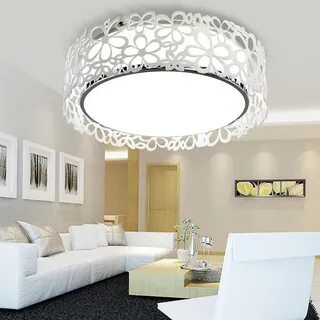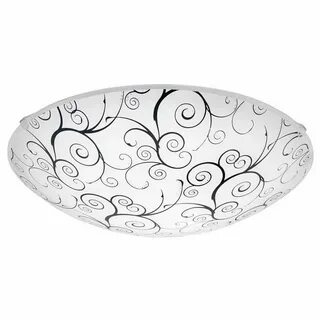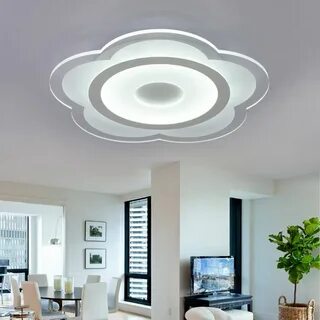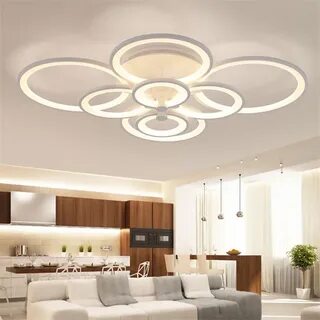Energy saving features

1.LED light source has high luminous efficiency
Comparison of luminous efficiency: incandescent light efficiency is 10-15lm, tungsten halogen light efficiency is 12-24 lumens/watt, fluorescent light 50-90 lumens/watt, sodium light 90-140 lumen/watt, most of the power consumption becomes heat loss.
LED light efficiency: It can emit 50-200 lumens/watt, and its light emission has good monochromaticity and narrow spectrum. It can directly emit colored visible light without filtering.
2.LED light source consumes less power
The LED single tube power is 0.03-0.06 watts, using DC drive, and the single tube driving voltage is 1.5-3.5 volts. The current 15-18 mA is a high-frequency device that has a quick response time and enables it to be operated with varying frequencies. When used with the same lighting effect, the power consumption is one ten thousandth of that of incandescent lamps and one half of that of fluorescent tubes. In Japan, it’s estimated that LEDs are twice as energy-efficient as fluorescent bulbs, and can replace up to half of the incandescent lamps in Japan. This would save 6 billion liters crude oil each year. A fluorescent lamp with the same effect is more than 40 watts, while the power of each LED is only 18 watts. .
LED light source is long-lasting.
Electronic light field radiation is used to produce light in fluorescent lamps, tungsten halogen bulbs, and incandescent lamps. The filament is susceptible to heat deposition and light loss. It emits light. LED lamps are small, lightweight, and encapsulated with epoxy resin. They can withstand high strength mechanical impact.

4.Strong safety and reliability
It is safe to touch and has a low calorific value. It can control the angle and pattern of light with accuracy.
5.LED light source is beneficial to environmental protection
LED is an all-solid-state light emitter, is impact-resistant and not easily broken, is recyclable, has no pollution, reduces the generation of harmful gases such as sulfur dioxide and nitrides, and greenhouse gases such as carbon dioxide, and improves people’s living environment. It can be called a “green lighting source.”
There are currently three technologies for producing white LEDs: one, which uses the principle of three primary colors and the three ultra-high brightness LEDs of red, green, and blue that can be produced to mix the light intensity in a ratio of 3:1:6 to produce white; the other, which uses ultra-high-brightness LEDs Highly InGan blue LED, with a small amount of yttrium-diamond-granite-based phosphor added to the tube, it can produce yellow-green light under blue light excitation, and this yellow-green light can be combined with the transmitted blue light to synthesize white light. All three are incompatible to ultraviolet light. Light LEDs use ultraviolet light to excite phosphors of three primary colors or other phosphors in order to produce a white light with multiple colors.
LED light source is energy-saving
Energy savings is the primary reason we are considering LEDs. LEDs are more expensive than conventional light sources. However, using the energy savings to pay back the investment will result in a net return of up to several times that amount in four to nine years.
Life of Lights
The best way to drive leds is with constant current sources. Using constant current source driving, there is no need to connect a current limiting resistor in series with the output circuit. The LED current is not affected externally by changes in voltage, temperature, or LED parameters. influence, so that the current can be kept constant and the various excellent characteristics of LED can be fully utilized.
LED lamps are powered by a constant-current LED power supply. Since the current flowing through the LED is automatically detected and controlled during operation of the power supply, there is no need to worry about excessive current flowing through the LED at the moment of power on, or a load short circuit and burnout. Bad power supply.
lamp housing

LED lights have the characteristics of high efficiency, environmental protection and long life. However, people who often use LED lights will find that because LEDs are extremely bright, they can easily turn light energy into heat energy, making LED lights very hot. If the LED is unable to dissipate its heat as quickly and efficiently as possible, it will have a shorter lifespan.
LED manufacturers often use aluminum cases for LED lamps. Aluminum casings have a beautiful look, are lightweight and easy to dissipate the heat. Many high-end electronic products use aluminum casings. The company’s “Mac Pro” high-end notebook computers use an aluminum casing for heat dissipation. This means that the computer doesn’t need a fan.
Aluminum shells can extend the life of the LED wick, and also make it look more beautiful. However, the aluminum lamp cup is relatively expensive and the production cost is very high. The lamp cup needs to be processed with a lathe. Therefore, some high-quality and medium-quality LED lights will use aluminum lamp housings.
Another common LED lamp housing is a plastic housing. Since the cost of plastic shells is very low, some low-end LED lamps will use plastic shells. Plastic shells do not dissipate heat well, and they tend to melt or sublimate when heated, producing harmful gases. Europe, North America and Japan don’t use plastic casings. Plastic casings are popular in certain areas of the country due to the high demand for LED lights.
Household lamp
Many LED lights can replace spiral incandescent lamps or energy-saving light bulbs, ranging from 5-40 watts, low-power incandescent lamps, to 60 watts (requiring only about 7 watts of electricity). As of 2010, some lamps can even replace higher-power light bulbs. A 13-watt bulb, for example, has the same brightness of a 100-watt lamp. (General incandescent lamps have an efficiency standard of about 14 to 17 lumens/watt, depending on their size and voltage. According to EU standards, an “energy-saving light bulb” equivalent to a 60-watt incandescent lamp requires at least Can output 806 lumens.)
The majority of LED bulbs are non-dimmable. However, some have dimmers that can be used and have a narrower illumination angle. The price of these bulbs has decreased from $30 to only $50 since 2010. LED bulbs are more energy efficient than energy-saving light bulbs, and can last up to 30,000 hrs if the heat is properly dissipated. Energy-saving bulbs have a life expectancy of about 8,000 to 9,000 hours. Incandescent light bulbs have a lifetime of around 1,000 hours. LED bulbs are able to be used for up to 25 years and their brightness does not decrease over time. The Energy Star standard stipulates that after a light bulb is used for 6,000 hours, the luminosity attenuation should be within 10%, and the worst case should not exceed 15%. LED bulbs do not contain mercury, unlike fluorescent lamps. LED bulbs are available in a variety of colors. The higher price of LED bulbs is offset by the lower cost of electricity and maintenance.
Special Purpose
White LED bulbs are highly efficient and have a leading position in low-power consumption markets (such as flashlights, solar garden lights, pedestrian street lights, bicycle lights, etc.). Single-color LED lights are often used to make traffic lights and holiday lighting.
In 2010, LED lights became a hot topic in the horticulture and agricultural circles. NASA was the first to use LED lights in space for indoor gardening. These planting lights have been designed to emit light waves that are identical to the wavelengths of chlorophyll. It not only encourages growth but also reduces the light waves which are not absorbed and cause waste. In the visible spectrum, only red and blue are needed for photosynthesis, so these lights are designed with both colors in mind. These LED lights are more suitable for indoor growing than similar products because they can produce the same brightness, don’t require a ballast and produce less heat. A reduction in heat can help reduce evapotranspiration and thereby the number of fillings. Plants should not be watered too much when using these lights.

Buying guide
- Choose LED lights with the “Three Guarantees” commitment and choose lamps with the CCC certification mark;
- The LED lamp productlabels must be complete. Regular products should be labeled;
- The CCC mark is a safety certification that you can look for on the LED power cord.
- The live metal parts of the lamp should not be touched. After the light source is installed in the lamp holder, fingers should not touch the live metal lamp holder;
- Check if the LED chip is in the correct position, and if the lens or screen has worn out.
Cause of damage
- The voltage of the current is unstable. A sudden increase in power supply voltage can cause LED lamps to be damaged. There are many reasons for a sudden increase in voltage, such as quality problems with the power supply or improper use by the user. Power supply voltage can suddenly increase. high.
- This is caused by a short circuit in the power supply of the lamp. It is caused by a component or short circuit in another wire that increases voltage at this location.
- The LED may be damaged by its own quality, causing a short-circuit. This voltage drop then spreads to the other LEDs.
- The lamp’s heat dissipation is bad. We all know that the lighting of the lamp is a heat dissipation process. The characteristics of LEDs will easily degrade if the temperature in the lamp is high. The LED lights can be damaged by this.
- It is also possible that water has entered the lamp, because water is conductive, which will short-circuit the circuit of the lamp.
- Static electricity has damaged the LED’s interior due to a failure to perform anti-static work. It is easy to damage the LED even if voltage and current are normal.
The common causes of LED flickering and their solutions
Normaly, the human eye is able to detect flickering light up to a frequency 70 Hz. However, it cannot detect frequencies above this. In LED lighting applications, If the pulse signal contains a low frequency component, with a lower frequency than 70 Hz the human eye can feel flicker. Of course, in specific applications, there are many factors that may cause LED lights to flicker.
In offline LED lighting applications with low power, an isolated flyback is a common topology.
Taking the 8W offline LED driver GreenPoint(r) reference design that complies with the “Energy Star” solid-state lighting standard as an example, since the sinusoidal square wave power conversion of the flyback regulator does not provide constant energy to the primary bias, the dynamic self-power supply (DSS) ) circuit may activate and cause light to flicker.
To avoid this problem, the primary bias must be allowed to partially discharge during each half-cycle. The values of the resistors and capacitors in the bias circuit must be selected accordingly.
Even LED drivers with excellent power factor correction that support TRIAC dimming require electromagnetic interference (EMI).

The transient current caused by the TRIAC step will excite the natural resonance of the inductor and capacitor in the EMI filter.
The TRIAC will shut off if this resonant feature causes the input current drop below the TRIAC hold current. After a brief delay, the TRIAC will usually turn on again and stimulate the same resonance.
The LEDs will flash if this sequence of events occurs multiple times in a half-cycle of the input waveform. In order to solve this problem, a requirement for TRIAC dimming would be that the input capacitance is very low. This capacitance must also be decoupled from the winding impedance by the TRIAC.
According to the formula, if the capacitance in the dimming module is reduced, the resistance of the resonant circuit can be increased, which in principle suppresses oscillation and restores the desired circuit operation.
